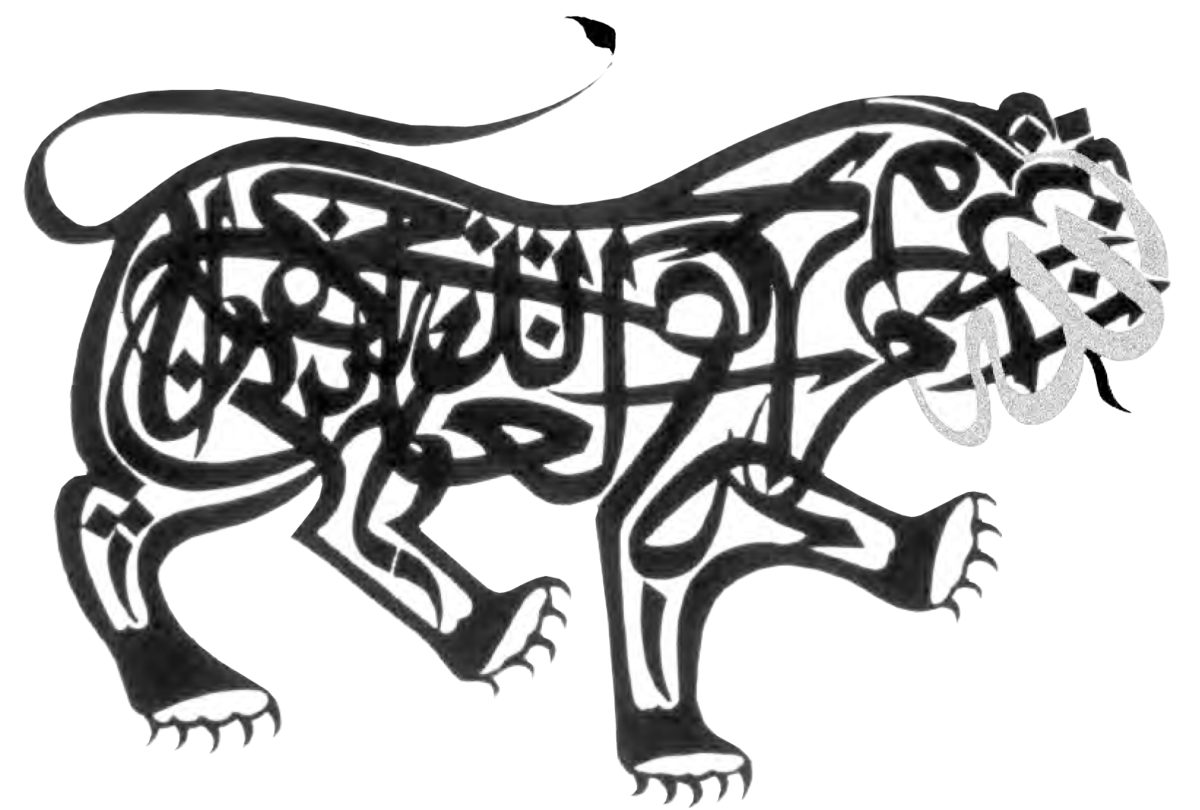Overview
Turkish calligraphers were skillful at transforming words and phrases into the shapes of animals. This was done by elongating, wrapping, and rotating letters to create the contour (outline) as well as details of the animal. Favorite animal shapes include the lion, peacock, and stork. They also created calligraphic compositions in the form of fruit, plants, and architecture. These objects hold religious meaning and were often composed of Islamic sayings.
Materials
Arabic Alphabet handout (see “downloads”)
Photo of a favorite animal
Fine black uniball pens
Pencils
White-out
White paper
Magazines and/or the internet
Scratch paper
Procedure
- As a class, examine zoomorphic calligraphic art from the Ottoman period. Look together at the calligraphic lion in the above photo. The word “Allah” has been highlighted to show how the artists cleverly incorporated the letters in the lion’s face. Using the Arabic alphabet handout, ask students to locate different letters in the lion.
- Describe to students the significance of certain animals in Ottoman and Islamic art. For example, the lion is a metaphor of Ali. This is because his surname means “Lion of God.” The composition has show religious significance on many different levels. For example, in accordance with Bektasi theology, the five-clawed paws signify God, Muhammad, Ali, and Ali’s sons Hasan, and Husayn. The red tongue symbolizes Ali, “the spokesperson of Muhammad.” The calligraphy that makes up the lion is an Islamic prayer.
- Ask students to name animals they believe to be virtuous and to describe why.
- Next, have students write a descriptive sentence with which they will create a zoomorphic composition.
- Have students find picture or download a photo from the Internet of an animal that has virtuous qualities.
- Lightly sketch the contour of the animal on white paper. Make the image large.
- On a piece of scratch paper have students write a descriptive sentence about the animal.
- Have students look carefully at their contour sketch. Arrange and lightly sketch the letters of the sentence inside the image. Allow students the freedom to experiment with the shape of the letters. They can be placed upside down, or incorporated into the contour itself.
- Have students “widen” the lines of the letters. They may want them to look like bubble, block, or stylized letters.
- Color in the letters with black pen. Have students neatly write the entire sentence below their animal compositions.
